With the new year 2023 arriving two days ago I ceased an opportunity that is only there for exactly one day per year. To be exact: An opportunity that is only apparent in one particular night of the year. That is, of course, the new year´s eve celebration and the instance that launching fireworks is – at least for now – legal. Now, you may remember an article about V.D.S. (Visual Distress Signals) I wrote some years ago about the arsenal of rockets and flares I have aboard my own boat. Well, two days ago I decided to fire them all.
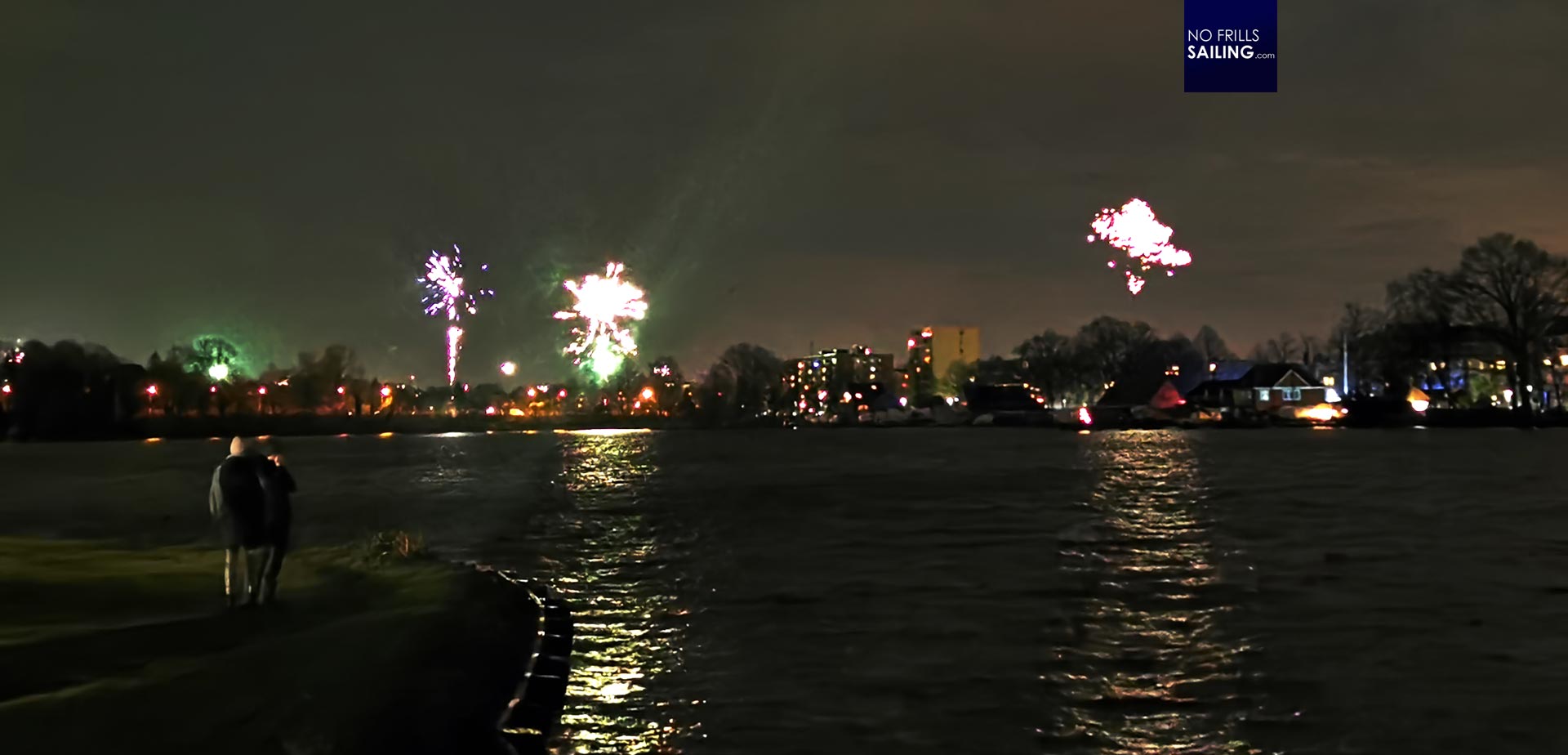
As a good skipper I understand my responsibility not only to be an able sailor but also to being capable and trained to react appropriately in safety-related situations. That of course includes potentially dangerous or catastrophic circumstances. In this, it´s not just the knowledge of how to handle a situation by the book but as well at least a minimum of practical training and experience. I know what I am talking about: Two years ago I ran aground and over-reacted a bit by sending out a Mayday via VHF but was able to carry my crew and the guests through this situation at least partially satisfying.
Best before … 39 years ago
So, here we are, new year´s eve and I have a set of long expired rockets and flares. These rockets are subject to lawful possession and execution. At least here in Germany: In order to be allowed to buy such equipment you need to obtain an official certification, issued by the government and obtained by training at a sailing school. This certificate comprises a theoretical part consisting of 120 questions and a practical part, which is, in essence, firing off those rockets. For the U.S. I am not aware of a certificate or exam but the US Coast Guard has a very definitive table of required signals aboard sailing yachts. You may check for your country individually.
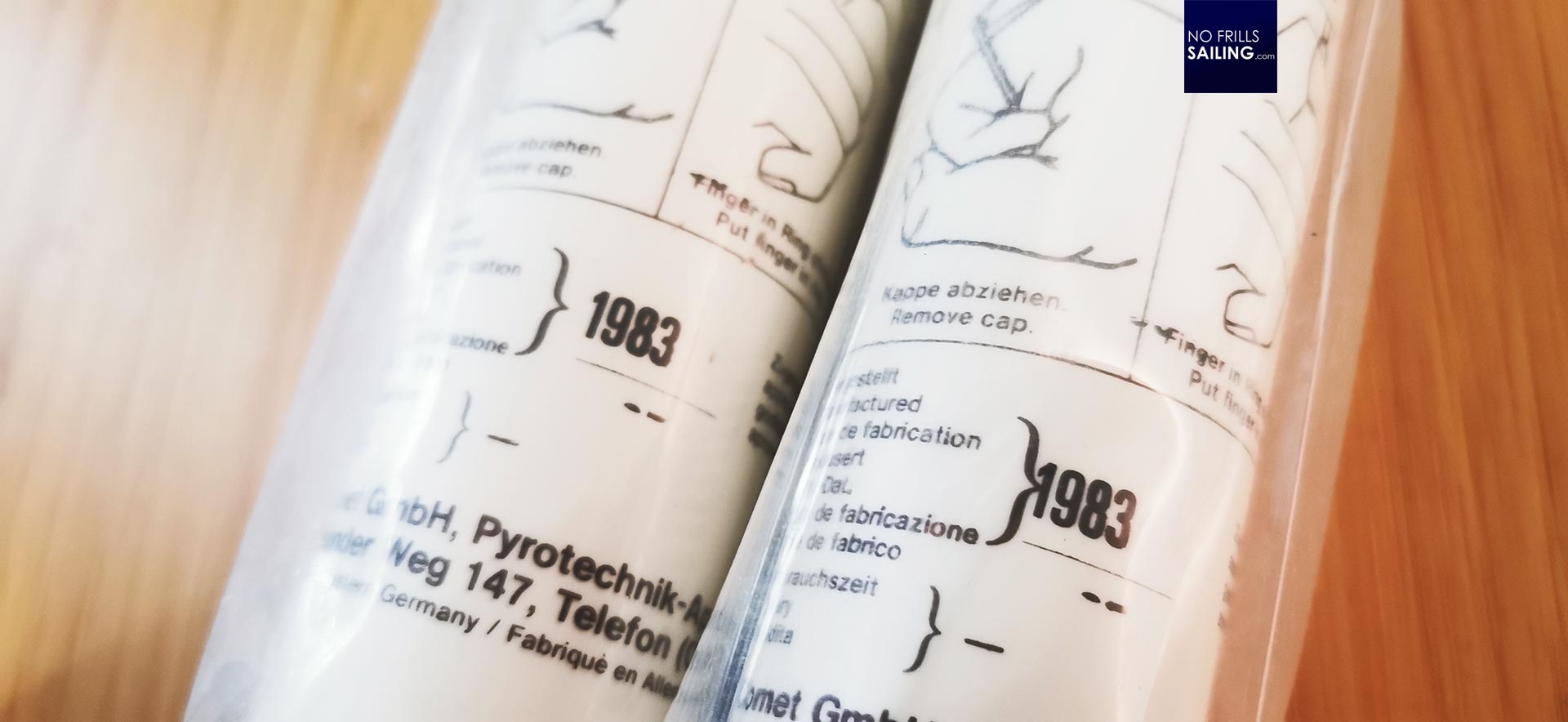
I personally did not have the time yet to do the certificate. My rockets and flares had been part of the used boat purchase of my first boat, OLIVIA. The boat was built in 1975, the rockets date back to 1983. This is just 4 years younger than I am. Well, I guess you could say that distress signals upon which your life may depend, should not be as old as 39 years … at least I think so and decided to use new year´s eve as my practical training occasion, as well as for my girlfriend because I think it´s good to have more people aboard trained and skilled.
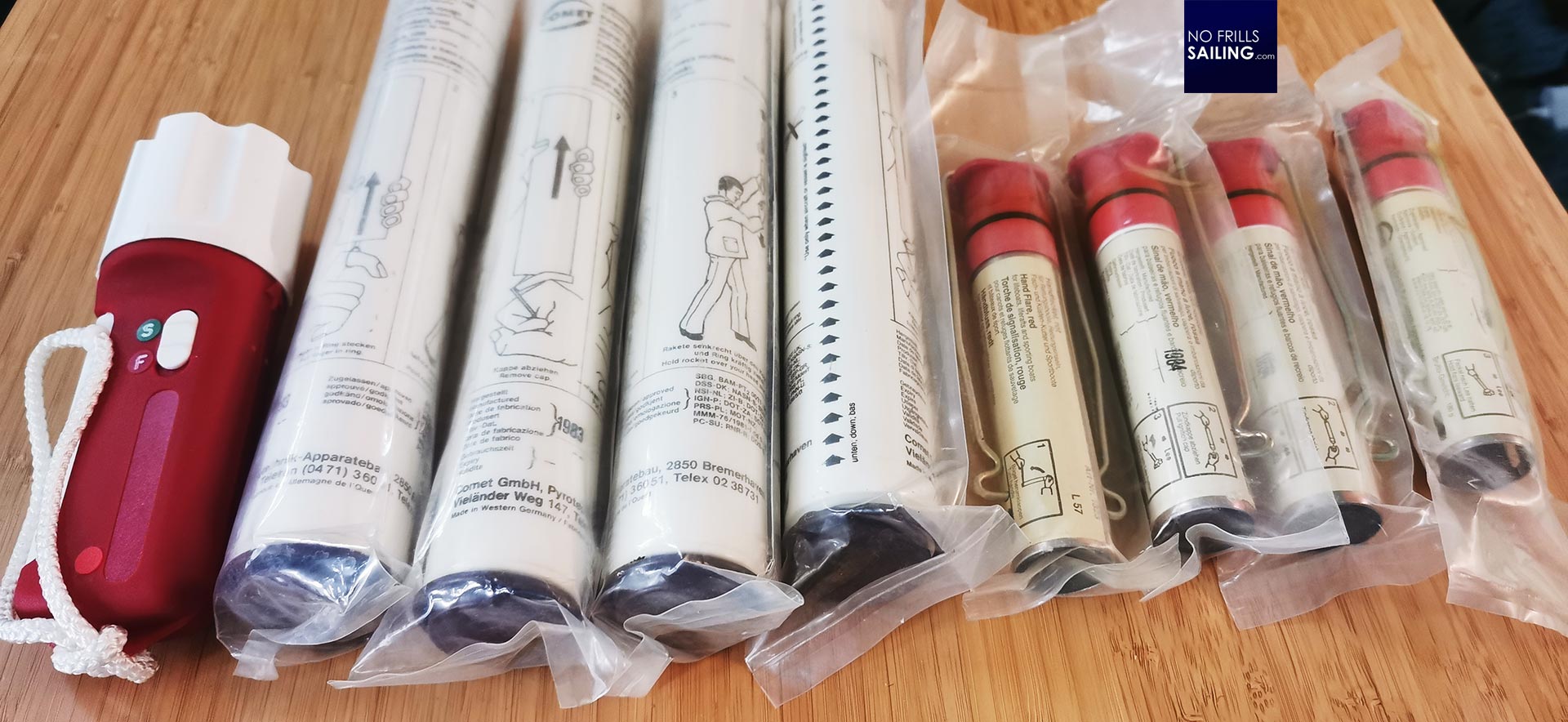
The arsenal at our hands consisted of red glowing high-rise parachute flare rockets, some hand-held re flares and something very German, the “Nico Signal”. This is essentially a revolver-style red-rocket flare launcher capable of firing six flares. As those rockets (except for the Nico Signal) had long been overdue in their “best before” dates I decided to wear leather gloves and triple anoraks, a thick hat and glasses to protect myself against possible mishaps, explosions or miss-firings. It added to the tension and the excitement, especially for my partner.
Testing the Nico Signal distress launcher
First thing we tested, let´s say to enter the mood, was the Nico Signal launcher. I regard this as a very handy, lightweight and easy to use gadget. The launcher is made ready just by pulling a safety pin (plastic, no power needed) and setting a slide from “S”, for “safe”, to “F”, for “fire”. You have to make sure that the magazine is in line with an arrow on the launcher. Ready.
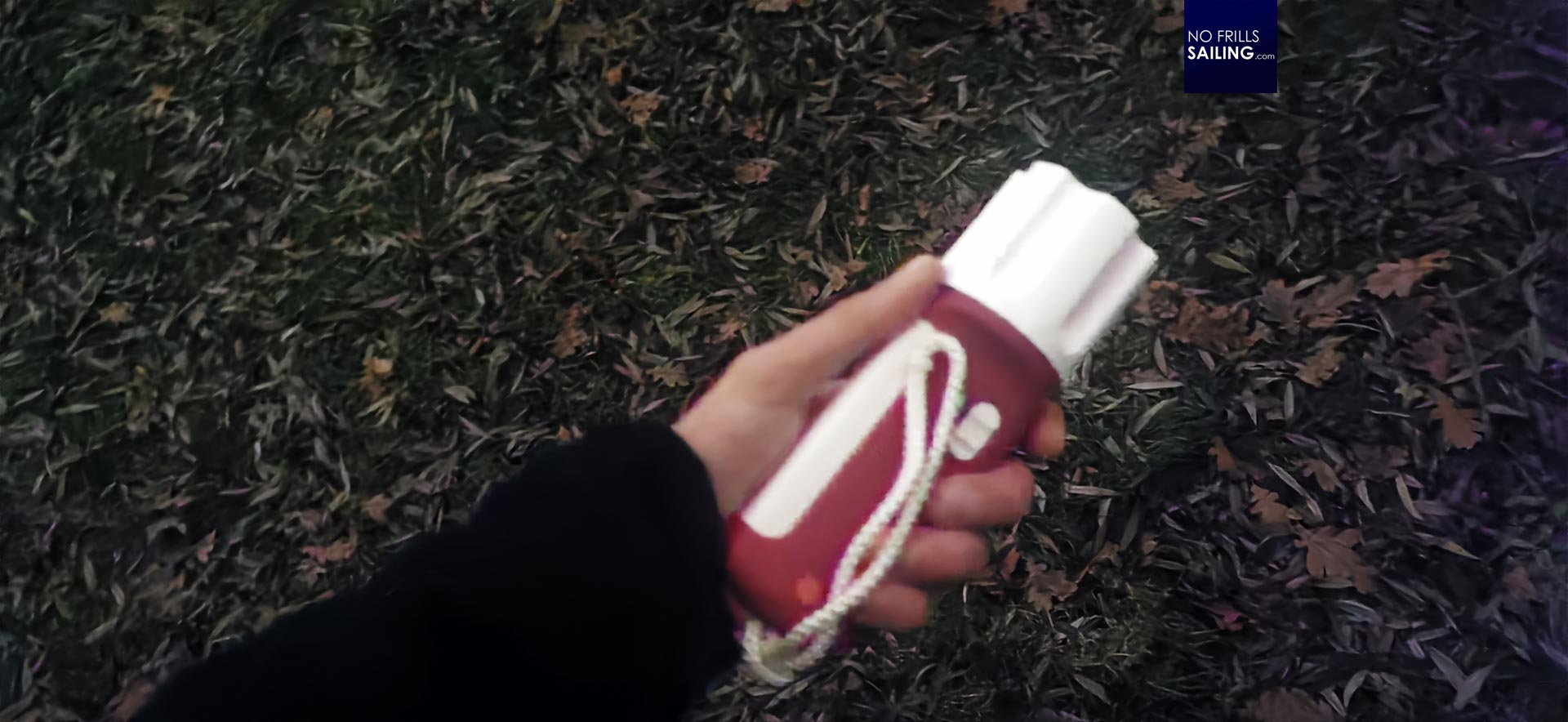
For firing – this goes for any VDS in use of course! – you chose yourself to be standing to windward side to avoid being fired upon by yourself, to inhale the exhaust- and ignition gases and of course to fire away from your boat. If firing to windward the rocket, slowly sliding down on its parachute, may end up landing on your boat. It is burning sensationally hot and won´t even go out when floating on the water: So it will burn through GRP-coachroofes or set your sails on fire. No good!
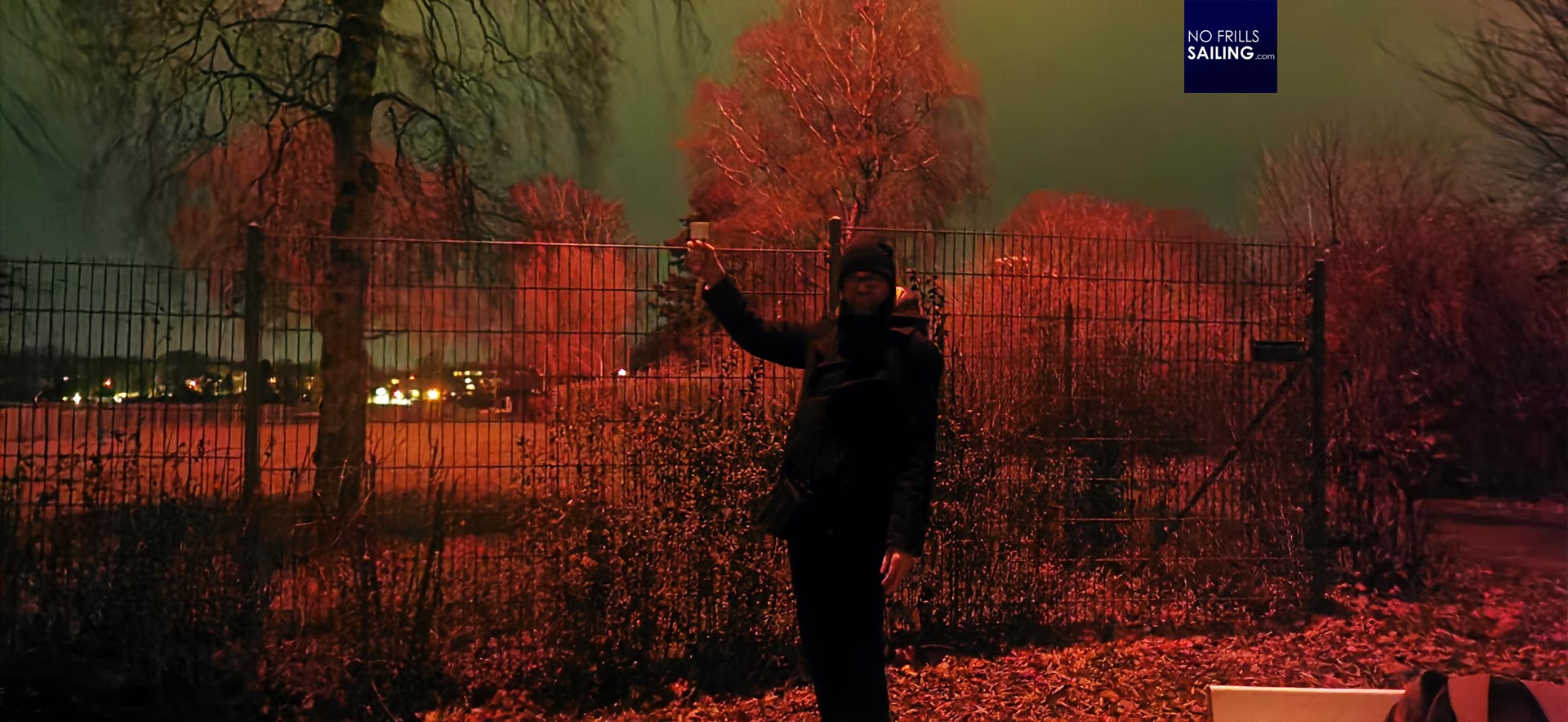
I held the Nico launcher up in the air, leaned it a bit to leeward and pushed the button. A loud bang occurred – much, much louder than expected! – and I felt a slight recoil. The red flare ignited, went up and slowly came down. The manufacturer states that burning time is around 6 to 8 seconds. It is worth noting that a Nico-flare is burning bright red during start as well. This is different to the “big” rockets which will ignite to glow red only when coming down, going up is just a small exhaust flame apparent.
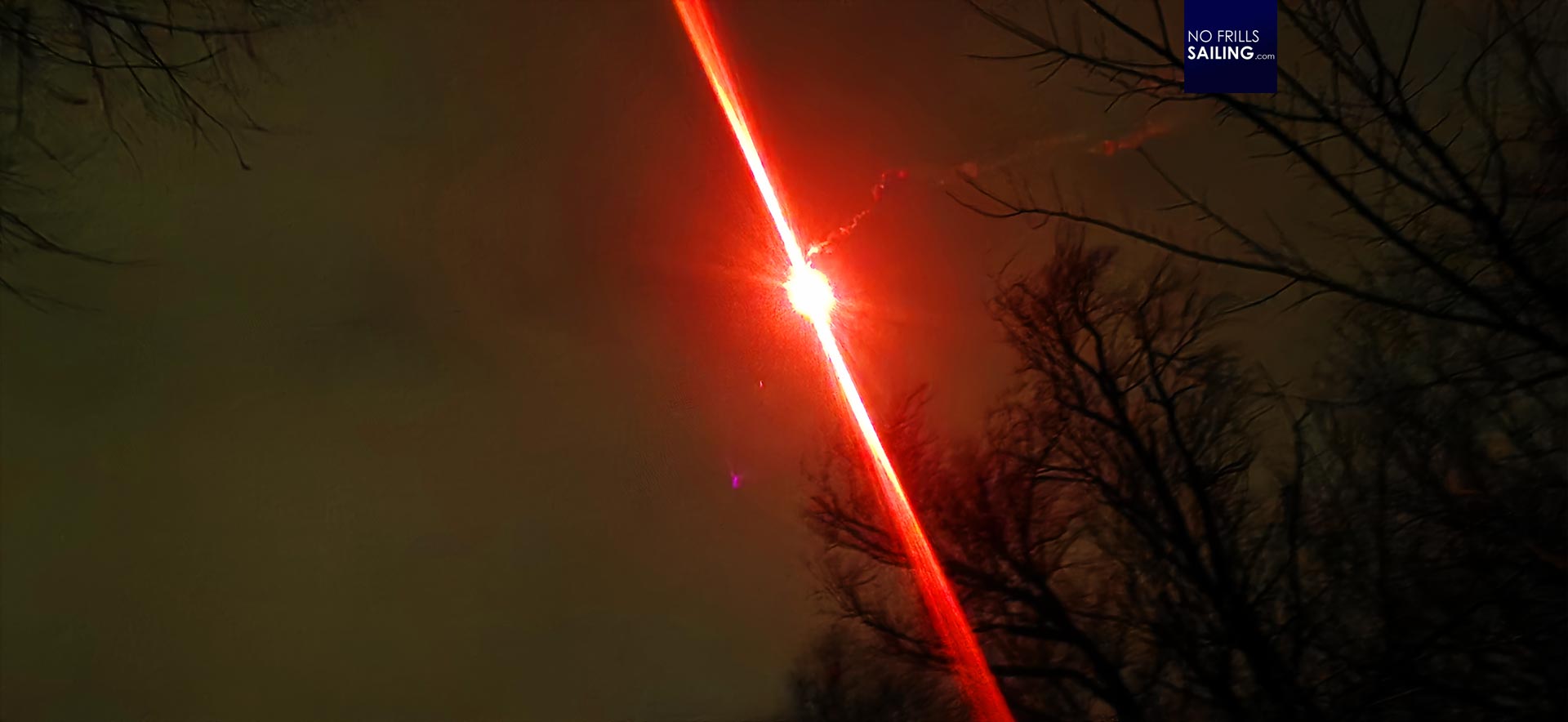
I reloaded the launcher, which is just a little turn of the magazine until the next flare is in line with the “launching arrow” and slid back the slide again to “F”. This all just takes a second or so and off goes the next flare. After my three shots I handed the launcher to my girlfriend who initially wasn´t so keen on being “trained” that night, but she handled the launcher well and easily, fired her three shots in a row without any problems.
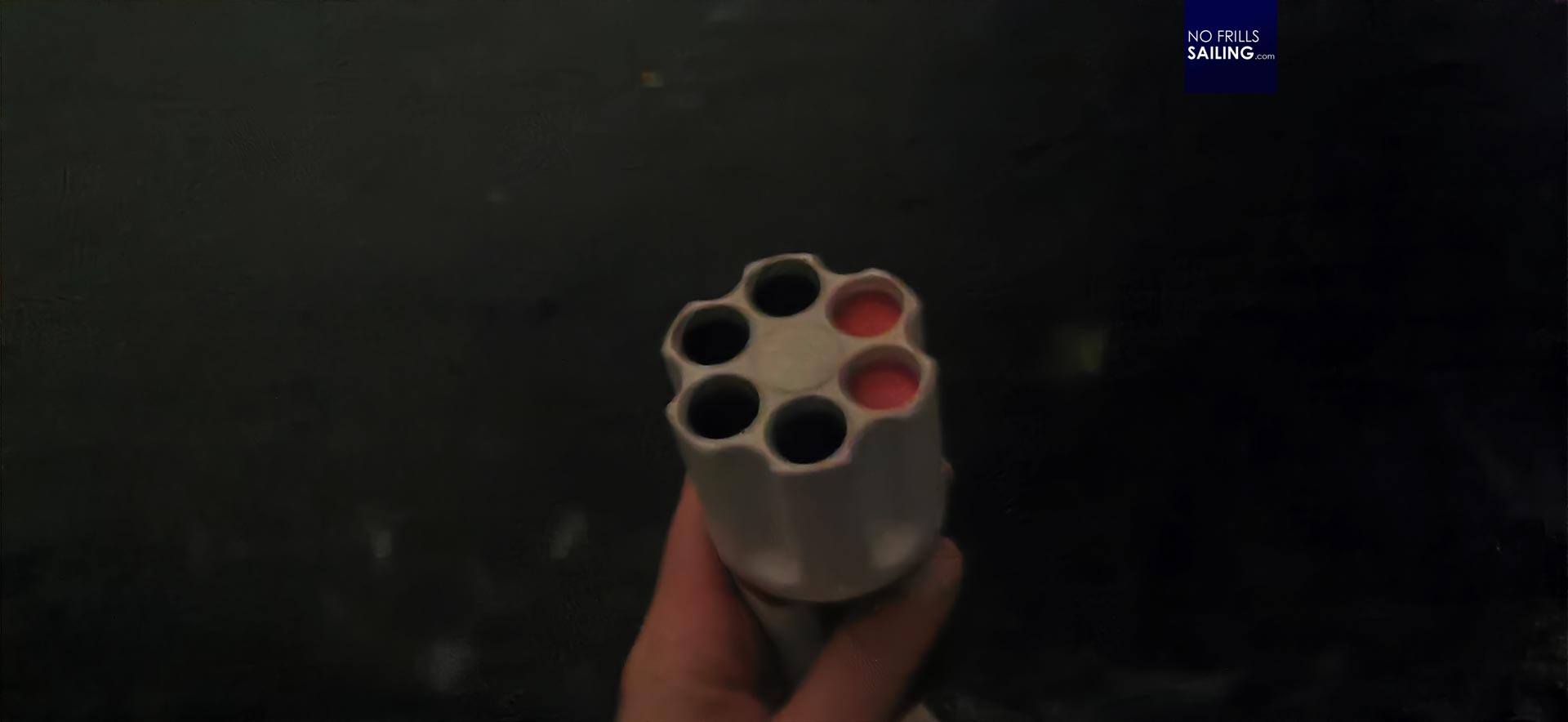
I must say that I really like the Nico-system: It is very fast to set up, easy as ABC to operate and you don´t need any big training or capabilities. The six shot magazine is just great: Three shots to gather attention in a row, the rest fired off after longer periods to allow possible rescue crafts to home in to the bearing of the flares. Six to 8 seconds of burning time is a bit short – and much shorter than the “big” rockets, which is the downside of this system. All in all, I´ll give it a 2+ or B+ for my American readers – easy, convenient and safe to use. The launcher and magazine are re-usable, so I now juts have to buy another set of ammo to get it ready again. Perfect.
Firing the real rockets
So, let´s check the real stuff. The rockets I had felt “real”. I mean, they are much heavier than you would think showing that something serious is about to happen. Each rocket is sealed in water- and airtight, very thick plastic. This is great to protect the rocket mainly from moisture so that it will fire for sure, but it´s a bit pain in the ass to rip open the plastic bag. I was happy my partner´s foresight had made us take scissors with us. Note to myself: Scissors into the VDS-kit aboard!
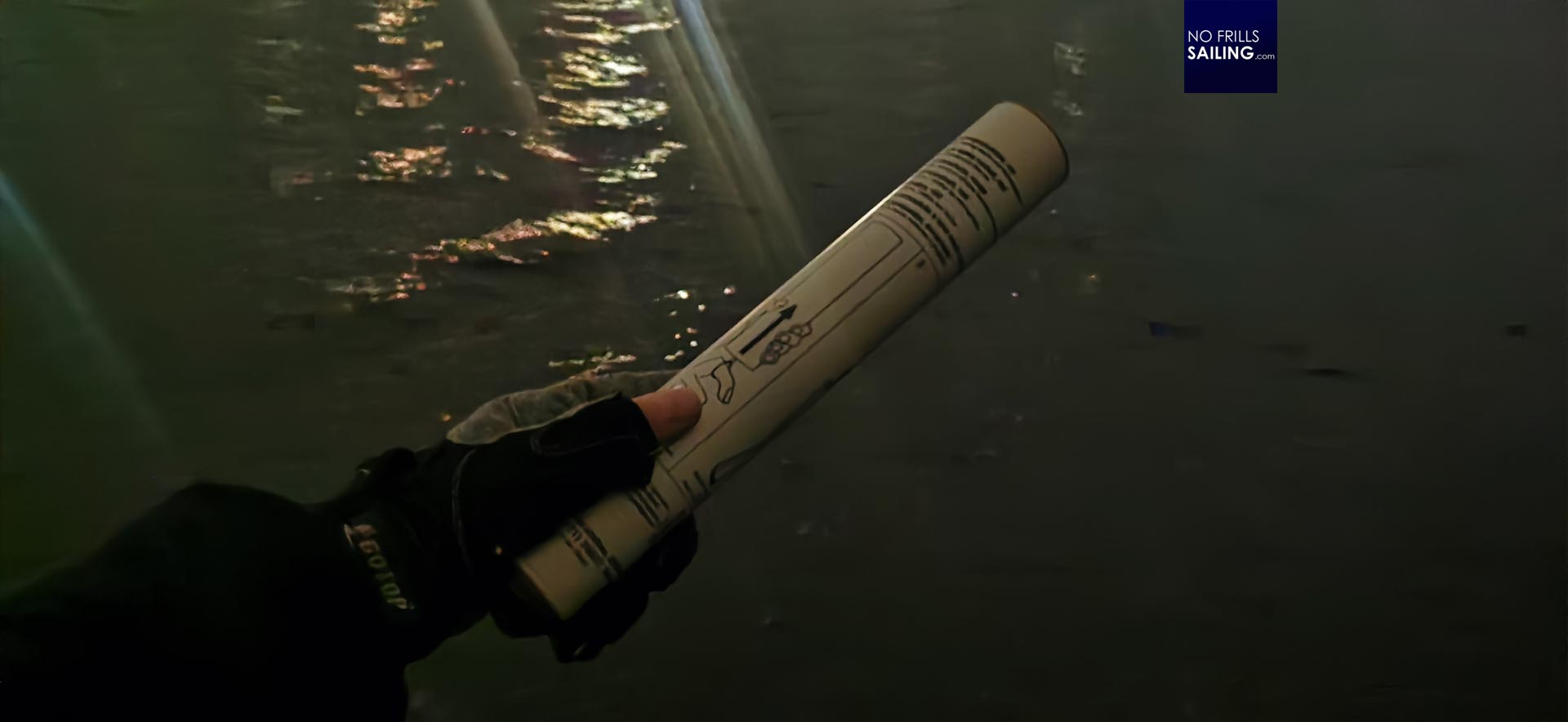
To make the rocket ready to fire you just remove a small plastic cap at the rear end of the 30 centimeters long cylinder. A plastic (or metal) ring attached to a some 10 centimeters long little pull will fall out. Holding the rocket away from your head, leaning a bit to leeward and pulling the string will ignite the motor and start the launch. When I did it for the first time – not knowing if it was really safe to set fire to a 39 years old explosive – I turned my face away from it for protection.
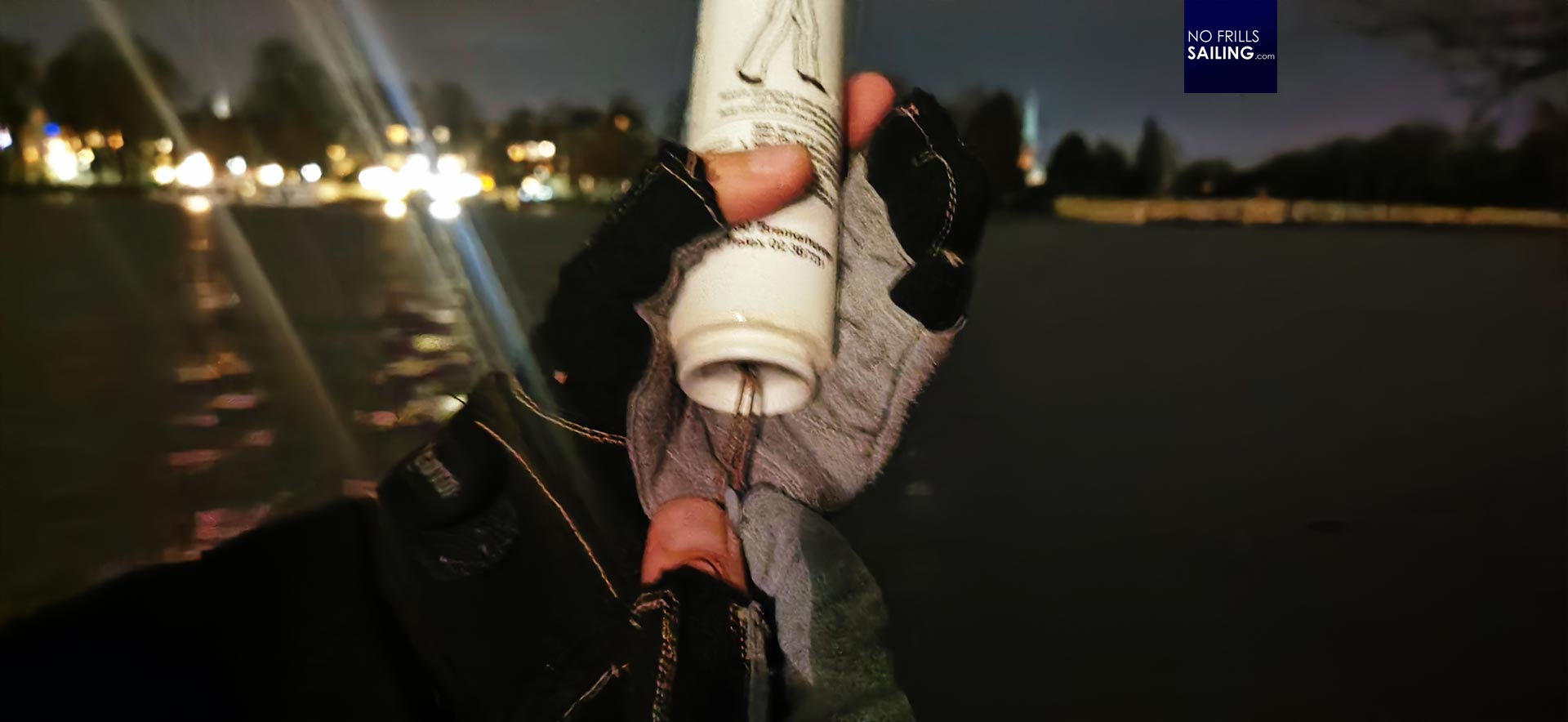
The launch is much faster than you think. Just when you realize the ignition blast the rocket is away. There isn´t much recoil apparently, much less than with Nico Signal. Also, the sound is much more appreciable as the rocket just goes away with a nice “Swoosh” whereas Nico Signal is a big bang.
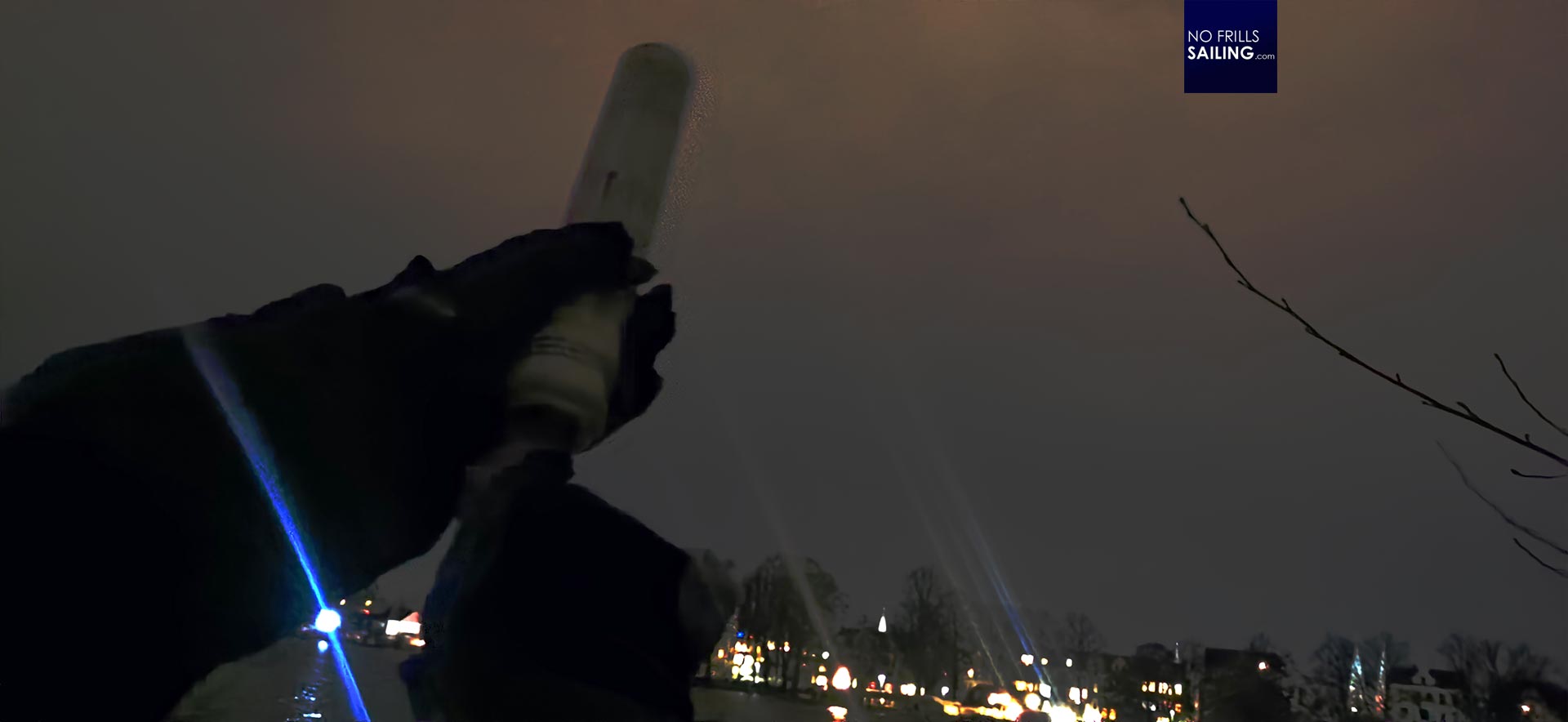
The rocket will go much, much higher than Nico Signal. As we have been training down at Luebeck´s old town moat, I fired the rocket over water to avoid it coming down still burning and maybe setting fire to a roof or a car. Comparing to ordinary new year´s eve fireworks, an SOS-rocket will go to triple or four times the altitude. It was amazing to watch the rocket motor propel the device in seconds way up, then, on the apex, the red flare ignited and started to burn.
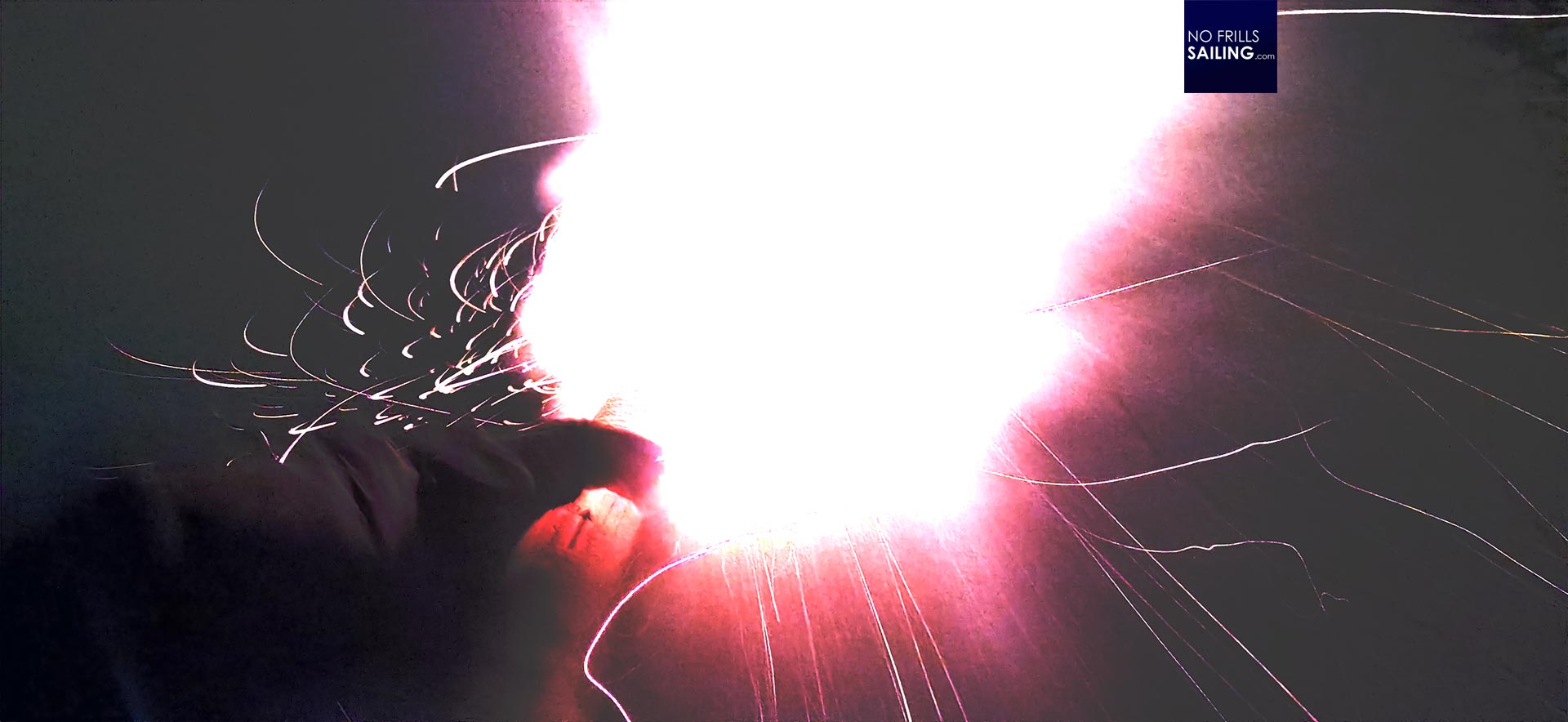
It burned so bright that the whole scene was illuminated in red light. Being much brighter than the other fireworks, it even tinted the whole water surface in glowing red as it slowly went down on its parachute. Amazing to watch: And reassuring too. I didn´t had my stopwatch running but I would assume that the red signal was there to be seen for at least half a minute. This is much longer than Nico Signal can achieve and will increase the chance to be seen by any rescue vessels by manifold. Also, the much higher altitude will make such a signal visible for vessel further away.
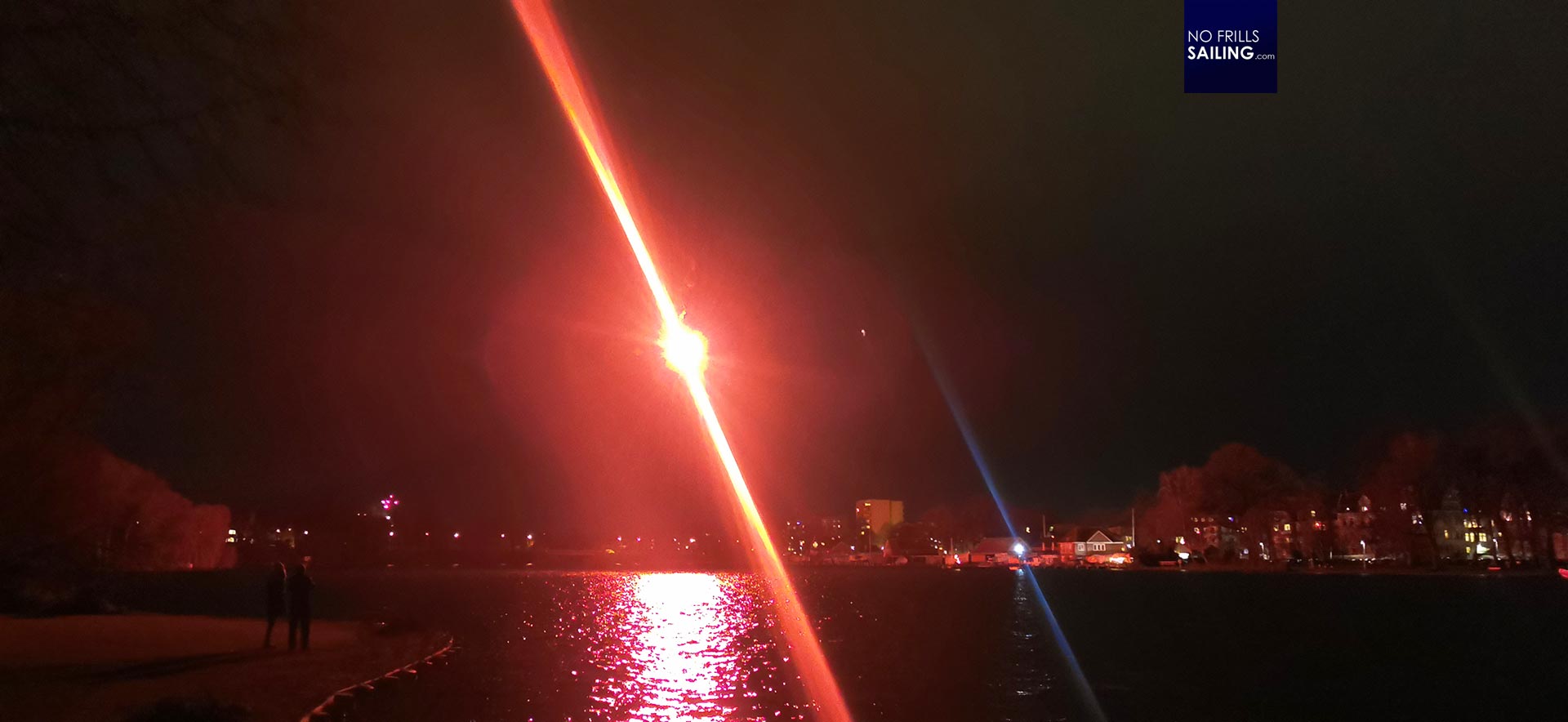
We discovered as well that firing those big rockets requires much more care. My girlfriend fired her first rocket – I guess out of fright – right into the wind and minimized it´s angle. The rocket didn´t go up straight and so it couldn´t burn all too long. We saw the flare burning red cooking bubbles in the water. A second trial went equally wrong as she misfired too much into leeward and the wind – at that night at around 15 knots – was able to drift off the rocket and also flatten the curve of ascension.
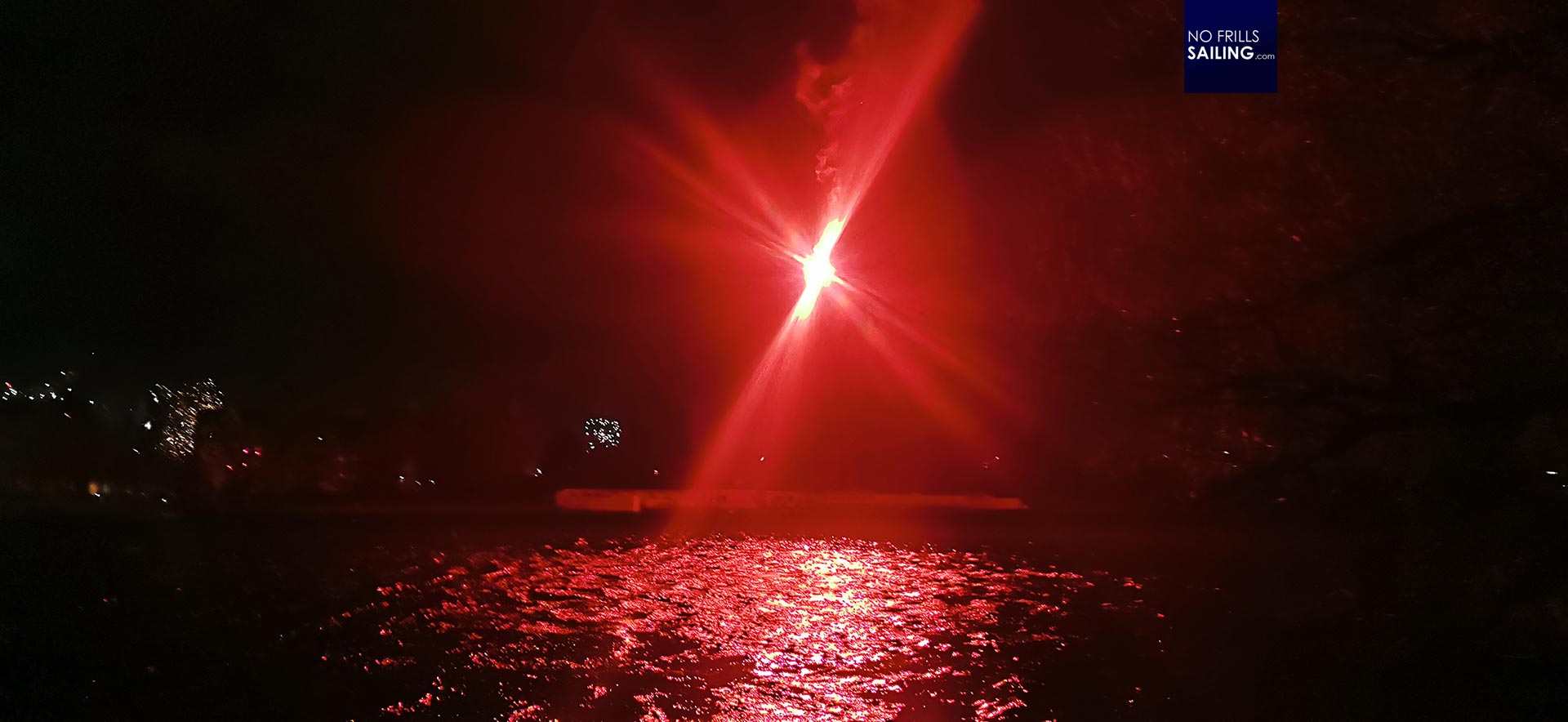
I guess this is why you should train – and I now understand that here in Germany an official course must be taken and a certification must be obtained to safely and professionally handle those devices. I fired my second rocket thereafter and did not achieve a nice curve as well. It´s not as easy as it seems, for real.
Red flare alert!
Lastly, we drew our attention to the hand-held flares. Those are used to wave in rescue vessels or to signal your position. The use of those is also very simple. I shall state that on each of those signals an easy, three or four step manual is printed both in pictures and words. So even non-trained crew members should be able to operate the VDS, nevertheless, it will consume more time.
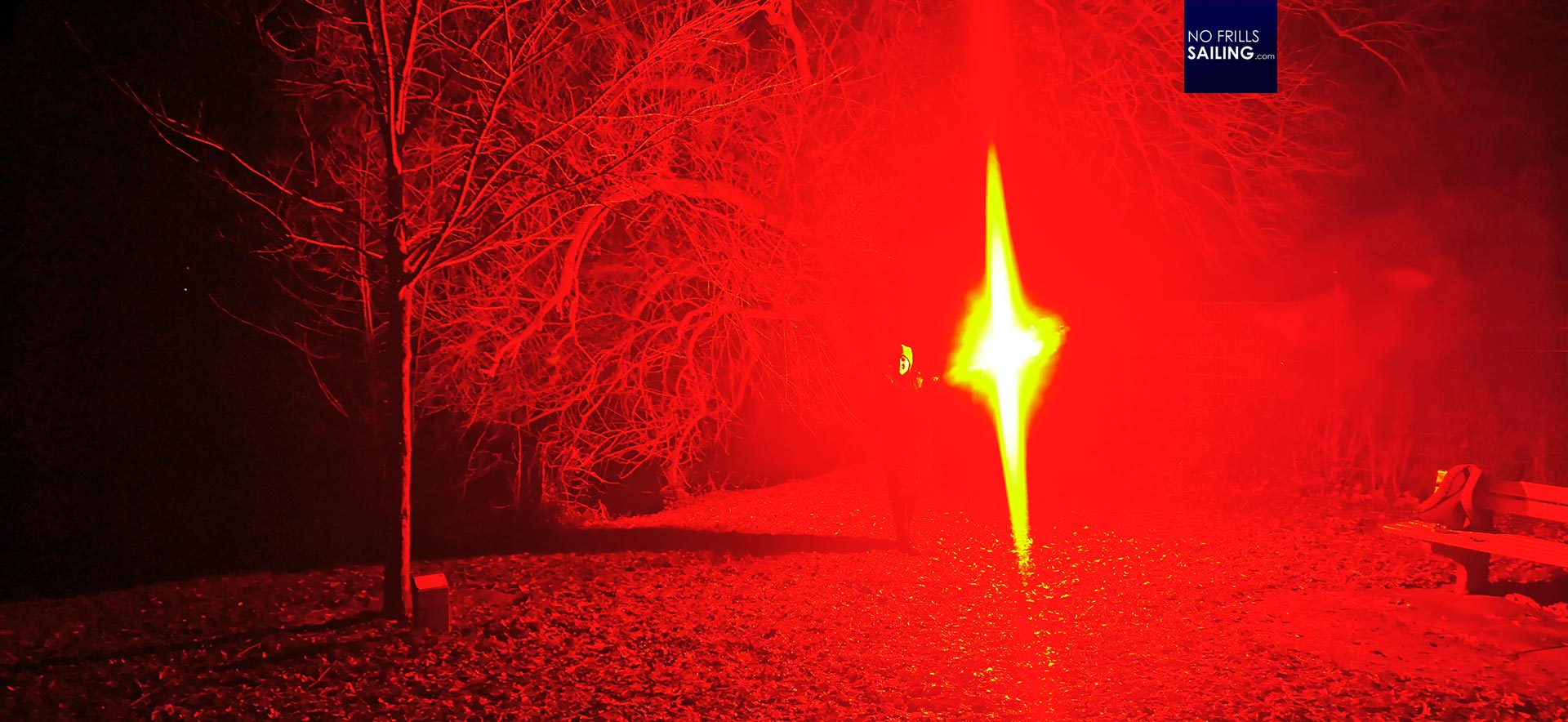
Making the flare go off is as well just a pull on a small string and one second later – literally! – hell breaks loose! We both had not expected such a bright burning eye-hurting flame. The sound was awesome, a strong roaring fizzle with a bass undertone that was kind of frightening and exciting at once. I could feel the heat warming my cheeks although I held the flare to leeward and it wasn´t that warm outside.
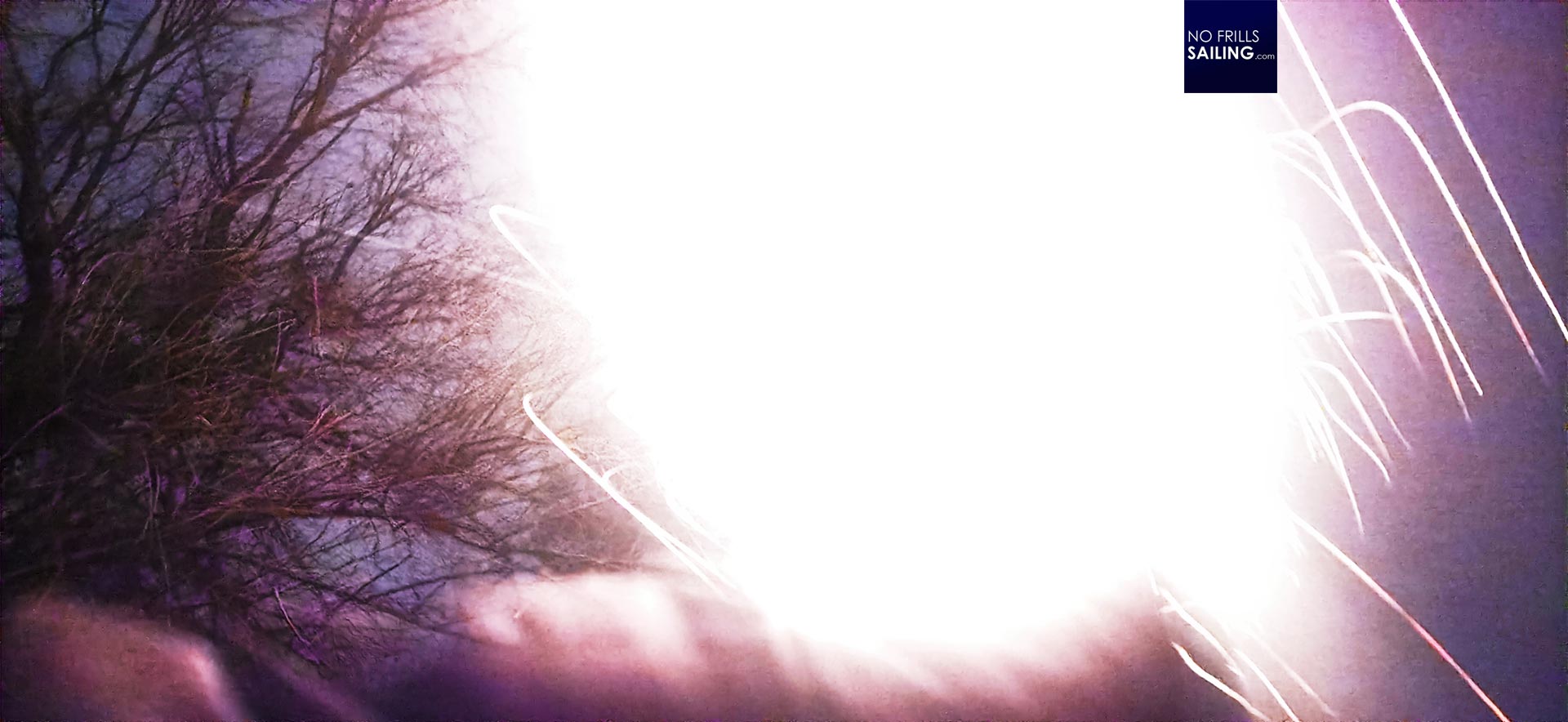
Burning time was pretty long, not a minute, but just under one minute I would say. The light such a flare is sending out is really strong: Other people who otherwise would have been standing in the dark, even a hundred meters away, could be seen clearly. The flare illuminated the whole park at the pond and turned it into a glazing red. Amazing! I can imagine that such a flare is a great gadget to make vessels or a helicopter home in to your position – even in broad daylight, thanks to the brightness.
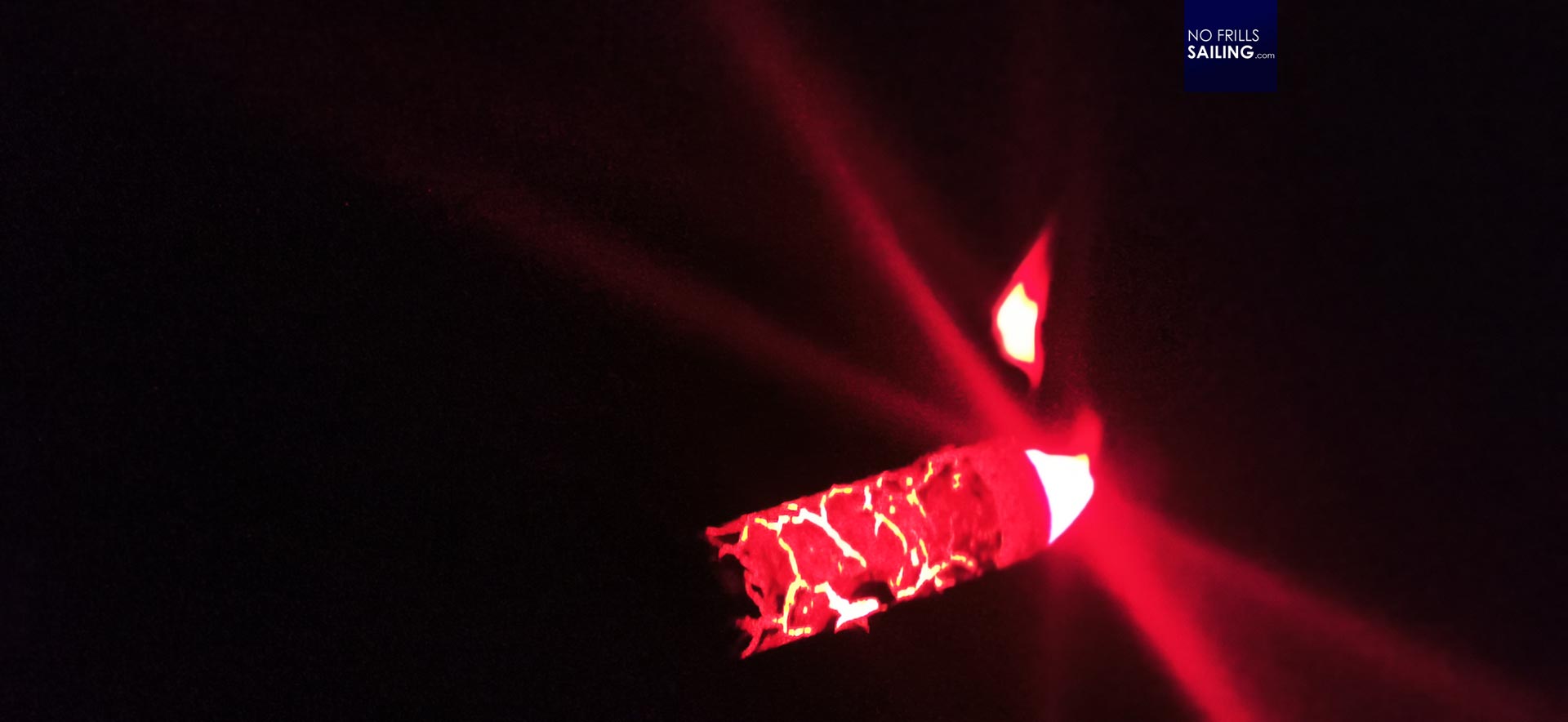
One downside I noticed and this is the burned out shell of the flare. The empty jacket was glowing menacing red and still fuming, the smell was hurting my lungs. As I put it into the cold water to finally cool it off it immediately turned the water to a boiling, sputtering mess. If used on a plastic boat, one should either discard the shell into the ocean or put it into something safe, like a water-filled basket, but never back onto the GRP-cockpit or Teak-decking.
Distress and S.O.S.-signals: What I´ve learned
The whole show took us some 25 minutes. We fired six red flares, four big red rockets and four hand-held flares. I found it exciting and I would say the bystanders had been equally excited as we have been. But we learned a lot that night. First of all: It is fool proof and easy. I can imagine that even in a situation where shit has hit the fan even under shock and in awe it would be possible to operate these signals safely.
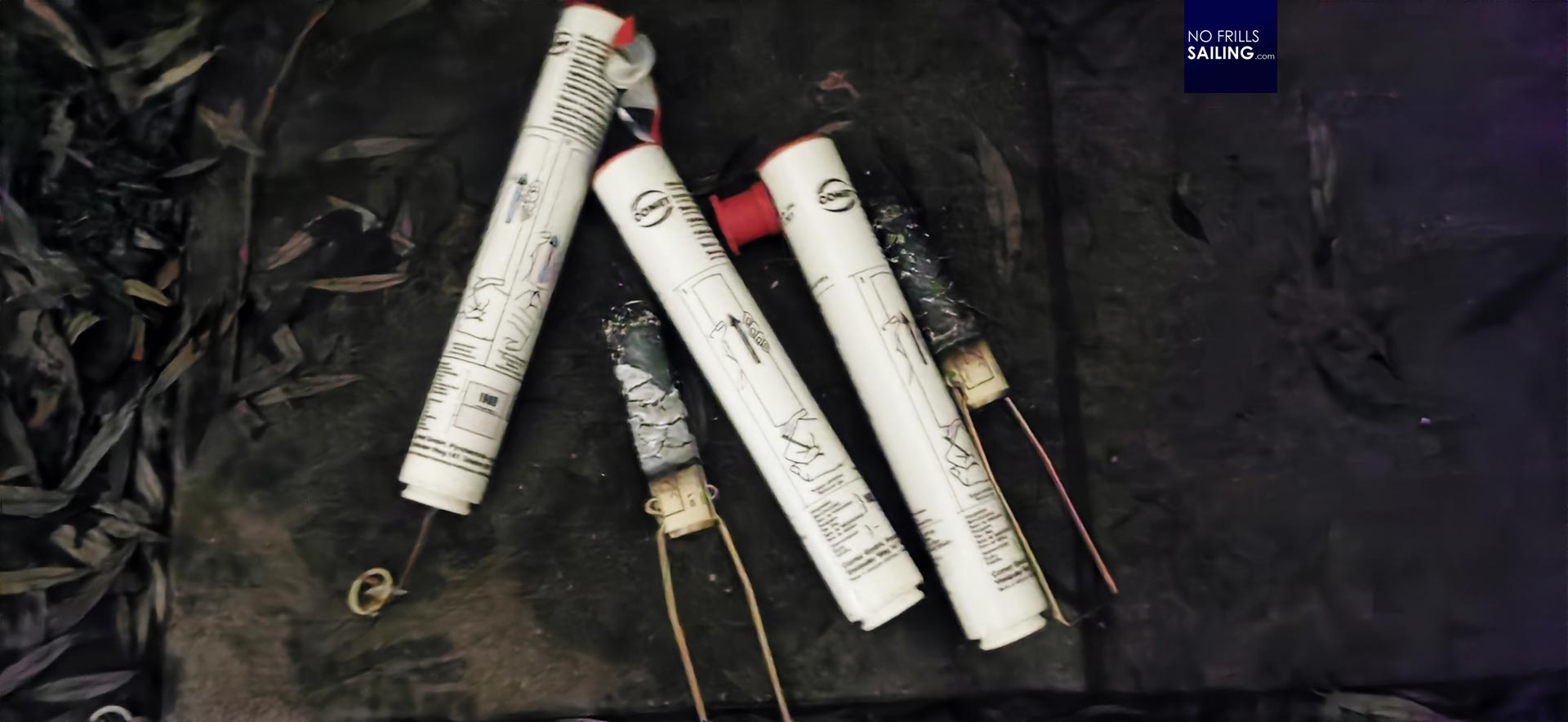
At the same time I must say, that I am deeply impressed by the power of those distress signals. My partner even more: The sheer force of those things going about their business is absolutely impressive which is a boost in my confidence and trust into those. In case of an emergency, together with all those electronic distress-devices like DSC-alert or EPIRB those visual signals are a powerful variety of make oneself visible to the rescuers: And there are still a lot more to check, like smoke signals.
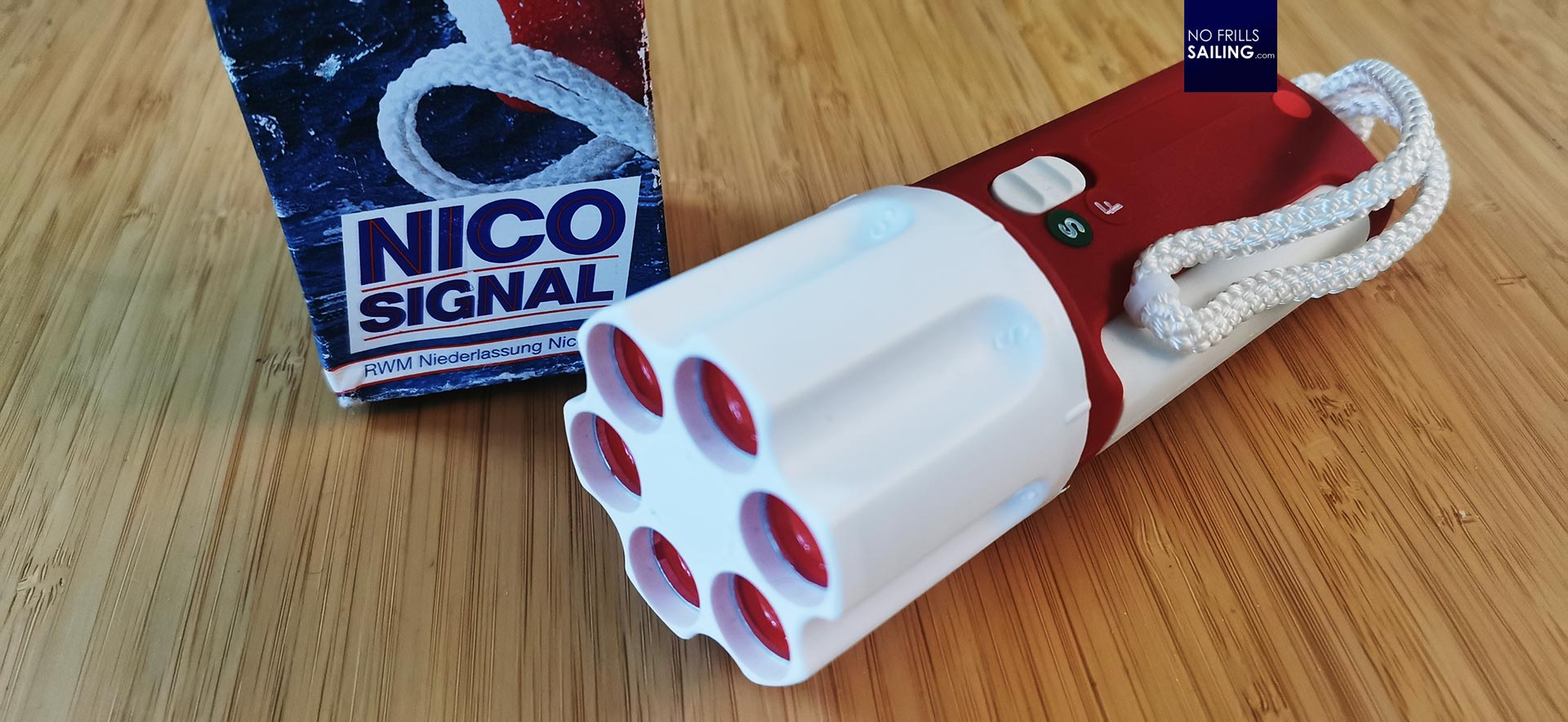
Also, I am convinced that training the utilization of those is a definitive must for a skipper who is determined to live up to the highest standards of seamanship. As easy as operating this kind of equipment is, as many mishaps can happen – with potentially injuring somebody or setting things on fire by accident. I noted to myself to check if there is a weekend left this year to eventually book such a course and do the certification, maybe do the whole World Sailing (ex-ISAF certificate) which is a long non-checked wish on my “becoming a skipper”-list.
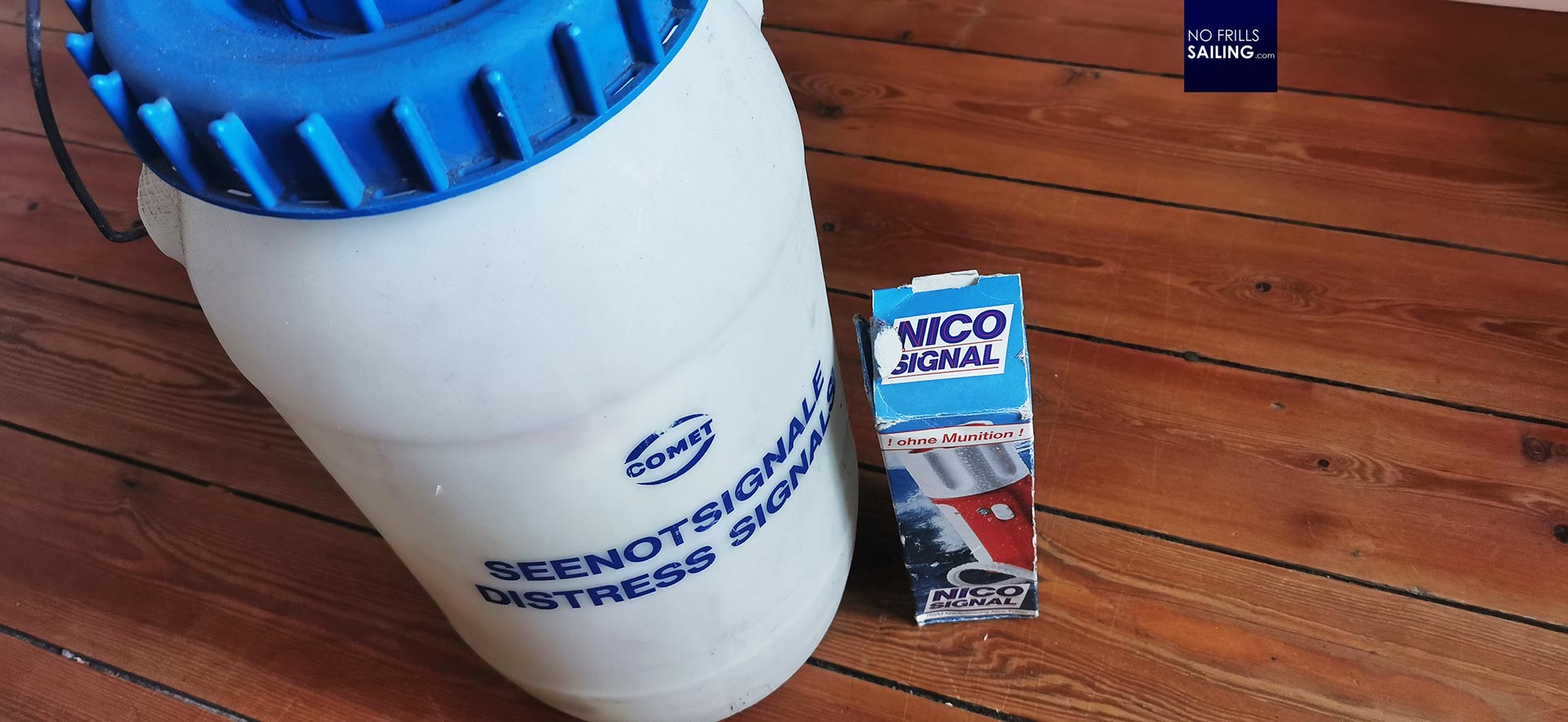
Lastly, I can recommend without exemption the Nico Signal. This is a great tool, although not shooting as high and not burning as long as a rocket, it is quickly readied and produces six shots, which are six chances to be seen. I also recommend to go for an absolute watertight and shock proof plastic canister to store your visual distress signals. Now, wasn´t that a great thing to end the old and start the new year? I would say so.
Maybe also interesting related to SOLAS and safety:
Rocket science: Flares, rockets & Co
A yacht´s safety concept
Training the MOB code of practice
